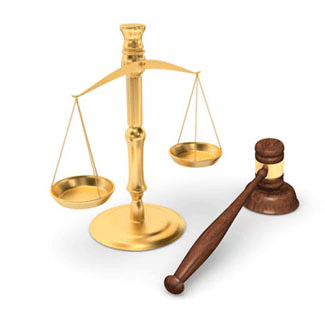
Pension Fund Shareholders Push For Transparency In Talc Liability Reporting
Major pension fund investors are demanding clearer disclosure of talc litigation liabilities, urging stronger financial transparency from companies facing mounting lawsuits
Monday, October 20, 2025 - A growing movement among institutional investors and pension fund shareholders is pressuring corporations entangled in talc-related litigation to improve the accuracy and visibility of their liability reporting. Pension boards, asset managers, and retirement fund trustees argue that incomplete or delayed disclosures have distorted the true financial picture of companies facing billions in potential settlements and verdicts. In shareholder proposals filed in 2025, several major funds called for enhanced accounting notes, regular updates on talc case exposure, and disclosure of legal reserves tied to ongoing product liability claims. A talcum powder lawyer said these shareholder actions mark a new phase in corporate accountability, where investors now treat talcum powder safety lawsuits as material risks demanding real-time transparency. Many of these shareholders represent public employees and retirees whose funds are invested in healthcare and consumer product stocks. They argue that when companies conceal or understate their exposure in baby powder lawsuit filings, they undermine the principles of ethical governance and investor protection. The Securities and Exchange Commission (SEC) has acknowledged the rise in investor concern, noting that environmental, social, and governance (ESG) risk factors increasingly encompass public health litigation. The combination of legal uncertainty and growing public scrutiny has driven some fund managers to divest or reallocate holdings away from companies that fail to adequately disclose their potential exposure to talc-related liabilities.
According to the U.S. Securities and Exchange Commission, companies are required to disclose material risks and contingent liabilities that could significantly impact financial performance. Analysts believe this requirement applies directly to ongoing talc litigation, particularly given the scale of settlements already proposed or rejected in federal courts. Some companies have already increased the frequency of their litigation disclosures in quarterly and annual filings, detailing reserve estimates and expected case timelines. Others have resisted, claiming that specific disclosures could prejudice ongoing negotiations. Institutional investors disagree, arguing that transparency builds long-term trust and reduces volatility. Governance experts note that shareholder advocacy on talc reporting mirrors similar campaigns once used to expose climate and opioid liabilities. The trend reflects a convergence of legal accountability and financial stewardship, where investors now demand the same precision in litigation reporting that they expect in revenue forecasts. If these shareholder measures succeed, future annual reports may include standardized tables detailing product-related litigation costs, reserve changes, and pending settlement classes. This could usher in a new era of financial openness, aligning investor rights with consumer protection goals.
In the long term, investor activism on talc liabilities could reshape corporate governance standards. Transparent reporting will likely become a benchmark for ethical investment screens, and companies that comply may attract stability-focused capital. Pension funds will continue pressing for detailed legal risk data, ensuring that investors know where their retirement money is exposed. Over time, this shift may inspire other industries facing health or environmental controversies to preemptively disclose litigation exposure. When companies embrace honesty as a financial asset rather than a regulatory burden, trust in both the market and public health accountability will rise.
